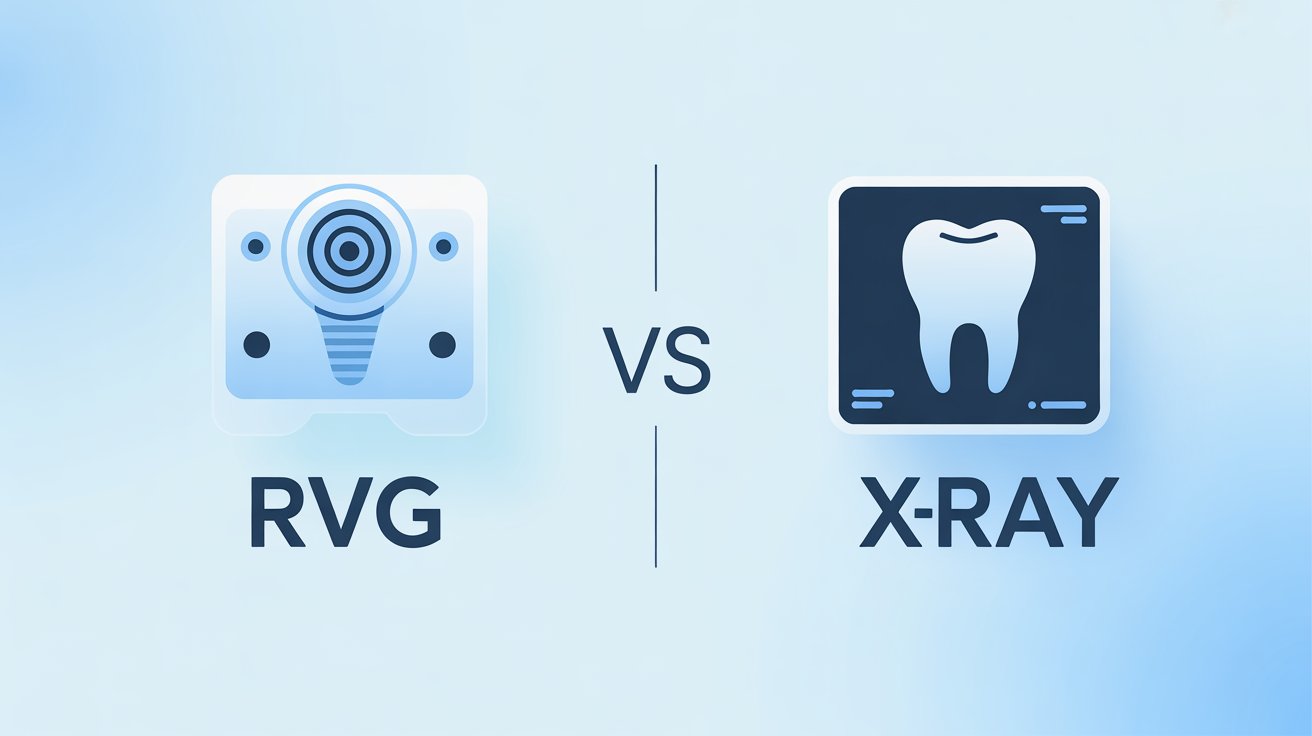
RVG vs Traditional X-ray: Which Is Actually Better for Diagnostics?
Dentists rely on radiographs every single day, and the accuracy of those images can completely change how you diagnose. Traditional X-rays have been around forever, but RVG has slowly become the go-to option in most updated clinics. If you’re trying to decide which one genuinely performs better in real practice, here’s a simple breakdown based on how RVG vs Traditional X-ray work in day-to-day cases.
Image Quality & How Much Detail You Actually See
RVG usually gives clearer images. You can zoom in, adjust contrast, and highlight exactly what you’re trying to assess. Things like early caries, thin bone levels, or tiny periapical changes show up more easily.
Traditional films can still be good, but they depend too much on perfect exposure and perfect developing. If the film comes out slightly too dark or too light, you lose detail and sometimes end up retaking it.
In short: RVG vs Traditional X-ray, RVG gives you more control over the image.
Radiation Exposure
One thing patients ask often is about safety. RVG uses noticeably less radiation compared to traditional films.
This lower exposure matters most when you need multiple images during RCTs, implant planning, pediatric cases, etc.
Summary: RVG is generally safer for repeated use.
Speed & Practical Workflow
RVG is much quicker. You take the X-ray, and the image shows up instantly. No chemicals, no processing time, no waiting.
Traditional X-rays take longer, and mistakes during developing are very common. On busy days, even a few extra minutes per patient adds up.
Result: RVG helps keep your schedule moving smoothly.
Storage, Sharing & Keeping Records
Digital storage makes life easier. With RVG, images stay organized, and you can pull up old records within seconds. Sending images on WhatsApp or email also becomes effortless.
Film X-rays fade, bend, get misplaced, and take up physical space.
Overall: RVG makes long-term record keeping simple and clean.
Cost & Long-Term Value
Yes, RVG costs more upfront. But once you start using it, there are almost no running expenses.
Traditional X-rays need films, chemicals, and developing supplies — plus retakes waste both time and money.
Conclusion: RVG usually becomes the more economical option over time.
Final Verdict
Both systems work, but RVG offers better clarity, faster workflow, lower radiation, and smoother record keeping. If you’re planning to upgrade your diagnostic setup, RVG is typically the more reliable and future-ready choice.
👉 Shop for dental products with Shop4Smile – powered by ABA Technologies.

Leave a Reply